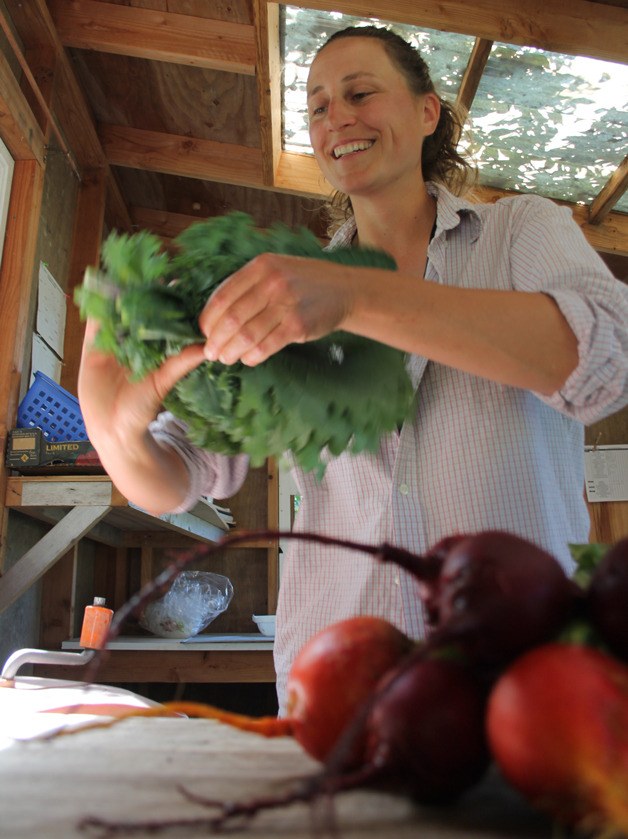Small agriculture is hoping to become big business with little stands on Whidbey Island.
With the help of Goosefoot Community Fund and Whidbey Island Friends of Food and Farming, boutique farmers around the island banded together to produce a brochure detailing the locations of farm stores across Whidbey. The pamphlet highlights 21 roadside stands — little booths where each farm’s products and produce can be stocked and sold daily.
Back in February, a group of farmers met with Goosefoot and asked for help. The nonprofit, which has a goal for economic development, agreed to help small-acre farmers with marketing and promotion, and created the brochure. It’s user friendly with icons and short descriptions of what’s available where, and the hours the farm stands are open.
“We realized there were more and more farm stands popping up on the island, even if you didn’t have a commercial farm,” said Marian Myzkowski, Goosefoot’s program director.
“Our local food economy is getting bigger and stronger every day,” she added.
Buying local has been an Island County push for a while, citing that most of the money spent on Whidbey and Camano islands stays there. Eating local proves a more difficult challenge, and it’s one that Whidbey resident Vicki Robin knows well.
She wrote “Blessing the Hands That Feed Us: What Eating Closer to Home Can Teach Us About Food, Community, and Our Place on Earth” about spending one month eating food sourced within 10 miles of her home. People are seeking out food straight from the farm, said Robin, because it is nutritious and delicious, and people with concerns about the industrial agriculture system or a general uneasiness with a highly industrialized way of life are reassured by seeing the way their lettuce, eggs or cheese are produced.
“It’s small scale, neighbor to neighbor,” said Robin, who worked on the brochure. “You can go out, look the farmer in the eye, see the kale growing. It feels like it is trustworthy food. I think that’s of more and more concern.”
In her book, Robin found she could get chicken, eggs, beef, pork, potatoes, roots, fruits, leafy greens, cheeses, mushrooms, nettles, fish, clams, crab, apple cider vinegar and berries, to name a small sampling, from the island itself. Other than things like olive oil, much of her diet for an entire month came from farms just like those listed on the brochure.
“You start going down the list, and you realize, ‘Oh.’ It’s not that hard, actually,” Robin said.
“The purpose is to discover what’s there and what isn’t there … We love our farmers. They’re wonderful people, and they deserve our money.”
For farmers like Jen White, owner-operator of Cedarhill Farms in Clinton off Bob Galbreath Road, the stands have been the ideal way to sell the literal fruits of her labor. Her 5.5-acre farm and orchard produces between 40 and 50 crops, a necessity she says, because customers like variety and diversity. That’s why she has raspberries, several types of lettuce and kale, carrots, beets, peas, and much more. She gives the people what they want.
“It’s really awesome for farmers,” said White, while cleaning a handful of red and golden beets to put on her roadside stand.
“There’s something really special about it,” she later added. “[Customers] want to see the farm, the gardens, meet the dog.”



